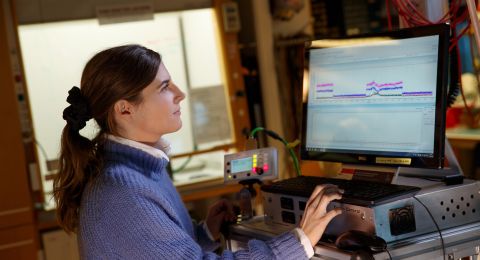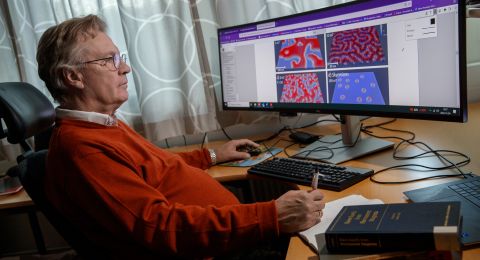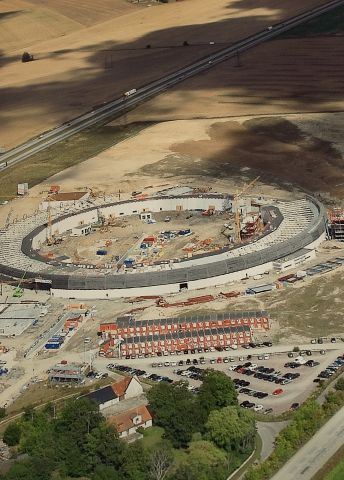
Strategic Grants
MAX IV
• The MAX IV laboratory is a Swedish national laboratory for research with synchrotron light - intensive radiation from infrared to X-rays that enable extremely detailed experimental investigations - within, for example, materials science, biotechnology, nano science, environmental science and nuclear physics.
• The name MAX is an abbreviation of Microtron Accelerator for X-rays.
• The groundbreaking ceremony was held in 2010. The facility will officially be commissioned in 2016.
• The entire facility is estimated to occupy around 50,000 square meters.
MAX IV is being built with Lund University as the host university. The Swedish Research Council is the chief financier of the facility with large grants from the Knut and Alice Wallenberg Foundation, VINNOVA, Region Skåne and the 12 largest research universities.
Since the MAX laboratory began at the end of the 1980s, the Foundation has contributed more than SEK 1 billion. The most recent grant is for the beam-lines for the new MAX IV facility.
On the dirt-covered plain in the Brunnshög area, it looks as if a giant arena is being built; the size is comparable to the Colosseum in Rome. But it is neither athletes nor gladiators who will perform. “The arena” consists of circle-shaped pipes, of a circumference of 528 meters, a storage ring with a vacuum inside. In the pipe, electrons that give off high-energy light will circulate at a speed close to the speed of light.
“Researchers and companies from throughout Sweden and the rest of the world that work with research based on synchrotron light will conduct their experiments here,” confirms Lars Börjesson, former Chairman of the Board of MAX IV and Professor of Condensed Matter Physics at Chalmers University of Technology.
The majority of the experiments concern basic research on materials and molecules, but many will have connections to applications in the development of new pharmaceuticals, batteries and solar cells and in the environmental and nano fields.
Excavators and construction workers dominate the site so far, but in summer 2016, the first research teams will take over. That is when the facility will be inaugurated, and the plan is for it to take place on the brightest day of the year.
“Because the facility will be the most brilliant, the most photon-dense, making the light beam finer, more focused, more clearly shining than in any other facility in the world, it felt natural to hold the inauguration on the brightest day of the year,” says Lars Börjesson.
The current, smaller storage rings at Max I, II and III will be closed down half a year before, in December 2015.
Nearly every field of science
It is easy to believe that the facility is just a facility for physicists, but this is far from the truth.
“Researchers in most of the fields of science will conduct experiments here. Physicists, chemists, biochemists, biologists, environmental researchers, archeologists, art historians and paleontologists are a few examples,” says Christoph Quitmann, Director of the MAX IV Laboratory.
Christoph Quitmann was recruited to MAX in 2012 and it is clear how happy former Board Chairman Lars Börjesson is over the recruitment.
“We found the best person for the job,” he confirms happily.
Christoph Quitmann was previously the manager of operations at the synchrotron light laboratory at the Swiss Light Source of the Paul Scherrer Institute in Switzerland.
“I practiced there for 15 years in order to come here,” he says with a smile. “This is a fantastic project,” he continues. “MAX IV is now the model for all similar facilities being built in the world. The US has even stopped the construction of a facility with direct orders to look at us and copy the MAX IV.”
Facilities in Grenoble, Japan and Brazil now have MAX IV as their role model.
What makes the MAX IV so unique is that the light beam formed in the storage ring becomes more exact and clearly luminous than other similar facilities.
“It provides better resolution that means that even finer details than before can be studied, viewed and depicted. The next step is being able to see detailed molecular structures and processes in realistic and complicated systems, such as working fuel cells, catalysts or in biological tissue,” says Lars Börjesson.

High standards provide new knowledge
Stability and precision are two extremely important factors in the construction of a facility like MAX IV.
“The standards are high. Our RMS value, how large the vibrations can be, is 30 nanometers and there are only a few facilities that beat that value,” says Professor Mikael Eriksson, the facility’s chief designer.
He explains that there is great interest from the City of Lund and the Department of Structural Engineering.
“The construction provides knowledge that can also be applied to many other areas,” confirms Erikson happily.
The circle-shaped facility is broken off at one point by a rectangular building. It houses a 250-meter-long linear accelerator, Linac. The particles are fed into it to be accelerated to a speed close to the speed of light before they are slung out into the storage ring.
“There, the particles’ path is bent using powerful magnets that force them to slalom, which is when the synchrotron light arises. The light is then led out to a number of research stations through special beam-lines that are connected to various points along the ring,” explains Mikael Eriksson.
The accelerator is unusually long since there are plans to build a free electron laser in a later development stage.
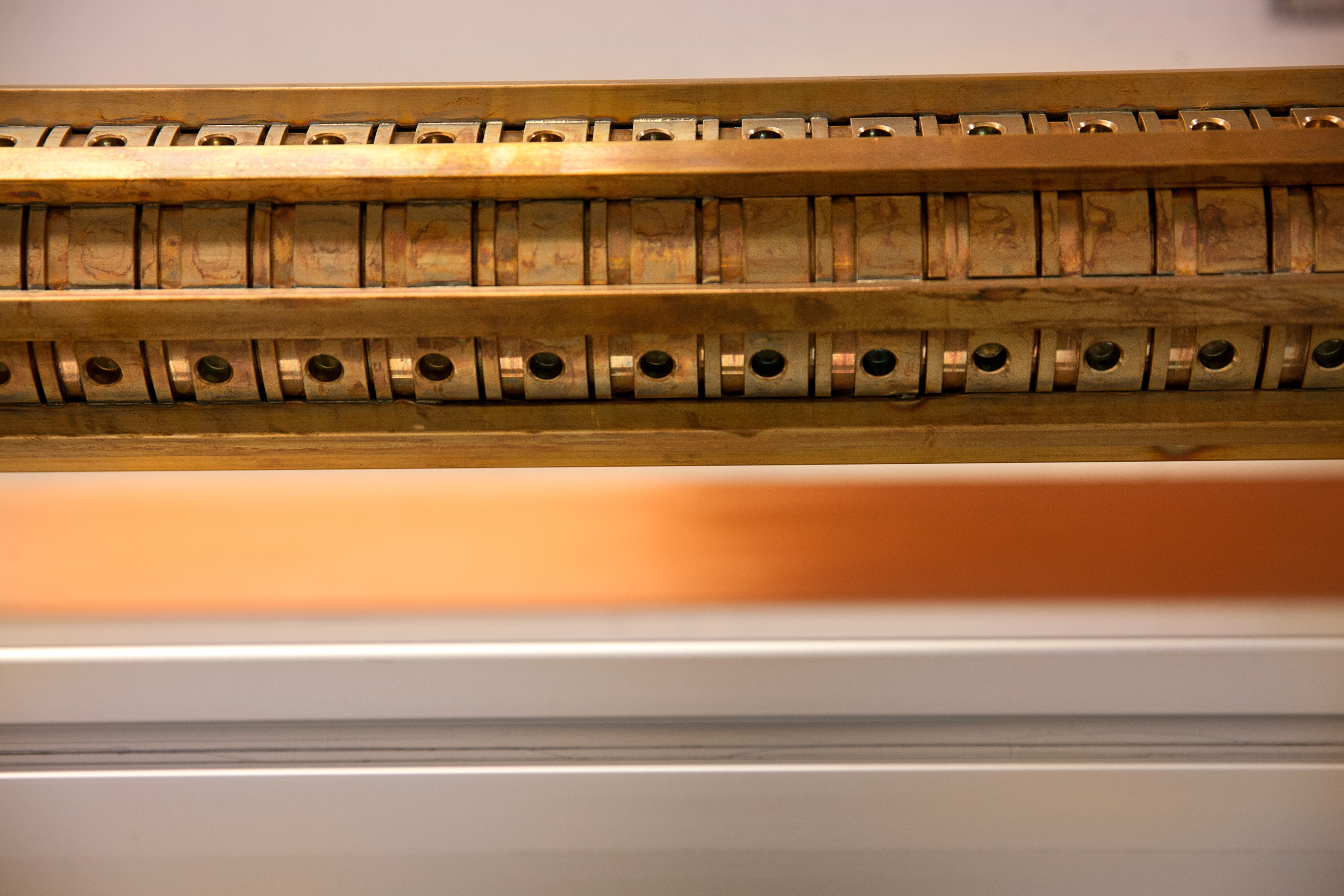
Multibillion kronor effort
There are plans for seven beam-lines (specialized experimental stations for the intense synchrotron light beams) in the first stage, but the hope is to have 25 by 2025.
“The first seven beam-lines are financed by the Knut and Alice Wallenberg Foundation and 12 universities. All of the beam-lines are specialized for various purposes. We hope to also achieve medical beam-lines to depict biological tissue somewhat soon,” says Lars Börjesson.
The first internationally financed steel pipe will be the eighth to be put in place.
A research facility of this size is a multibillion kronor operation. The beam-lines alone cost around SEK 100 million apiece. The financing will therefore also come from many places.
“This has been important. The facility is national, but the ambition is to make it more international. Firstly through an expansion towards the Scandinavian and Baltic countries. It is important that the facility is fully utilized,” says Lars Börjesson.
Researchers and companies that publish their results openly can use the facility at no expense.
“Those who choose to keep their results for themselves must pay a fee covering the full cost of the experiment. To gain access to the facility, an application must be submitted that is reviewed by a number of experts through a peer review process. It is important that the experiments that are carried out maintain the highest quality. We must also be able to prioritize the applications.”
Academic production is already high in the current MAX facility, with an outcome of one publication per day and one dissertation per week.
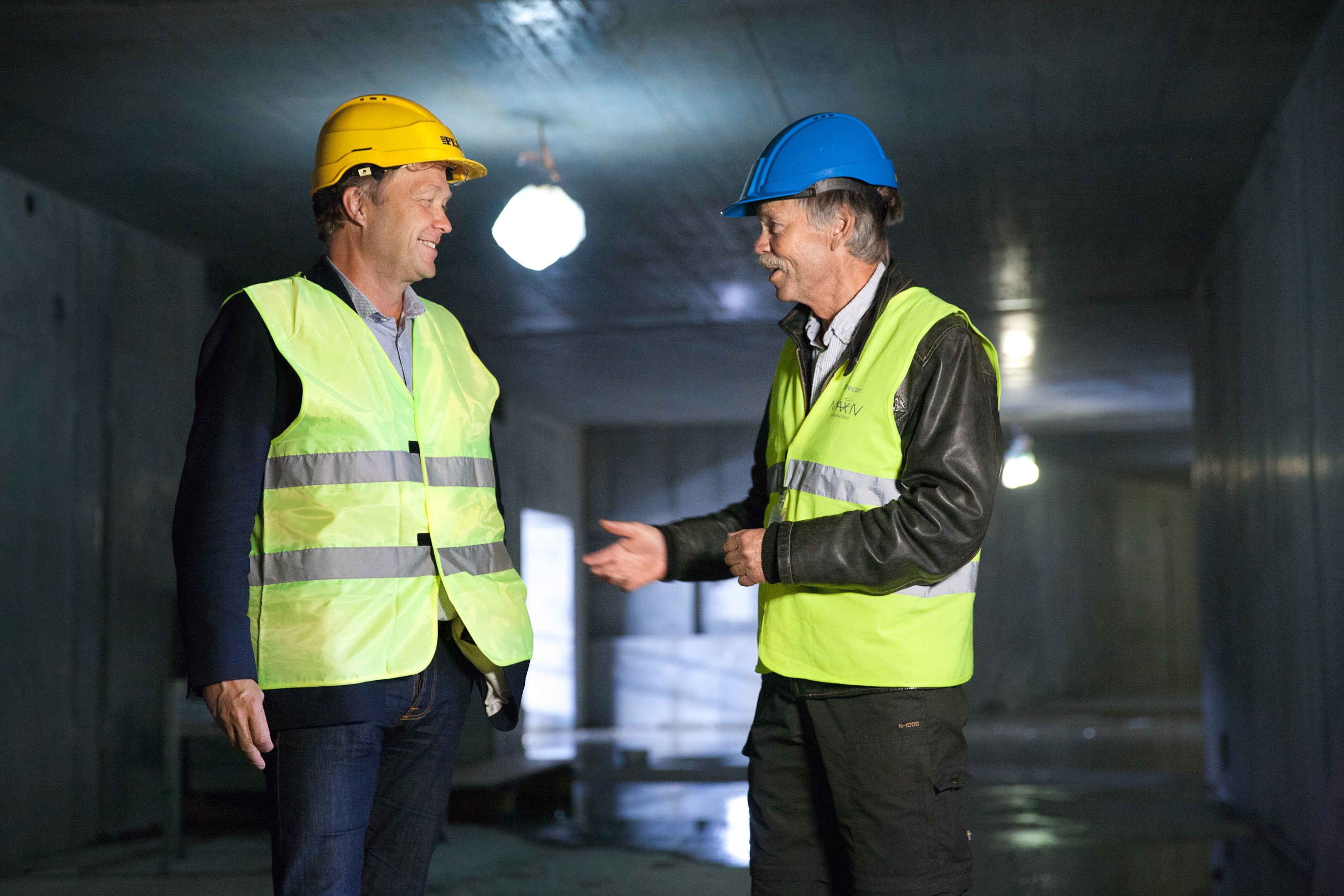
MAX IV + ESS = 3
MAX IV actually consists of two storage rings. The smaller ring that only has a circumference of 96 meters is nonetheless larger than the current MAX lab’s largest ring.
It is estimated that around 250 people will work in the facility and that more than 2,000 researchers per year will use it for their experiments.
The number of researchers in the area will grow sharply when the European Spallation Source (ESS), the world’s most powerful neutron source and a unique facility for material research, is completed. Between the two facilities, a research village will be built up.
“We have a fantastic opportunity to create an intellectually stimulating environment. It is rare that so many researchers meet at a single place from so many different places, both geographically and scientifically,” confirms Lars Börjesson.
The village is estimated to have 12,000 overnight stays per year. However, other infrastructure will also be built up that can be shared between both of the facilities.
Text Carina Dahlberg
Translation Semantix
Photo Magnus Bergström

